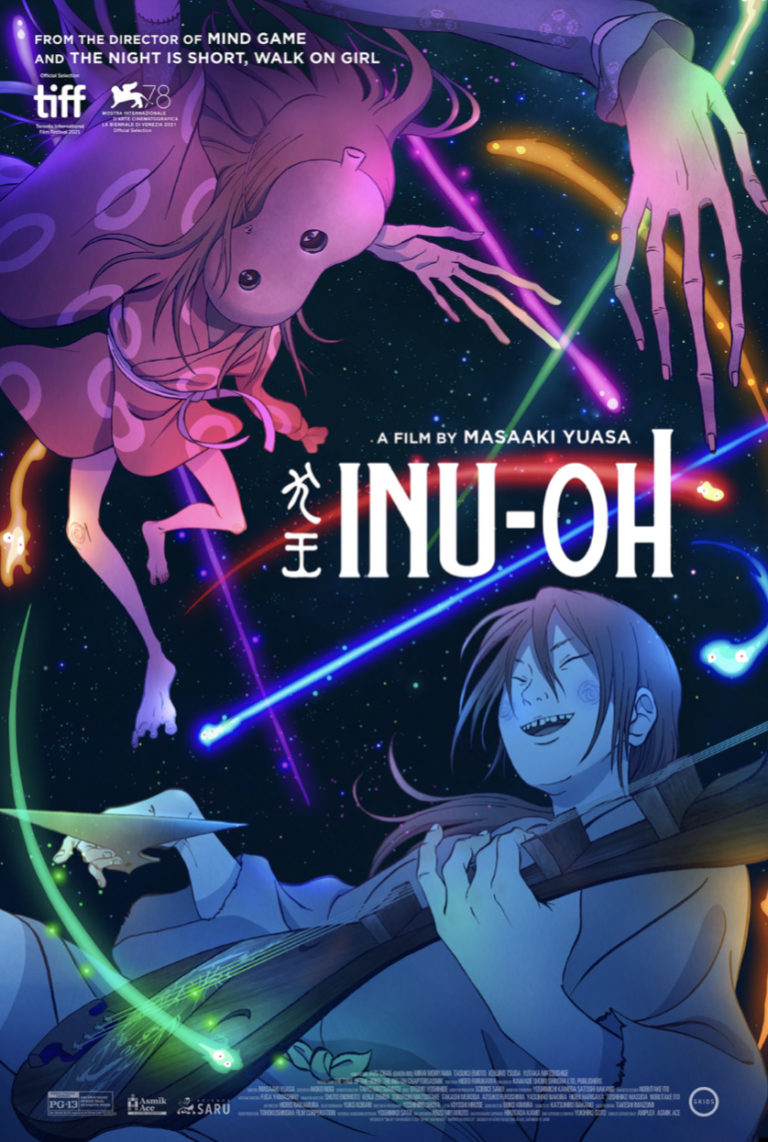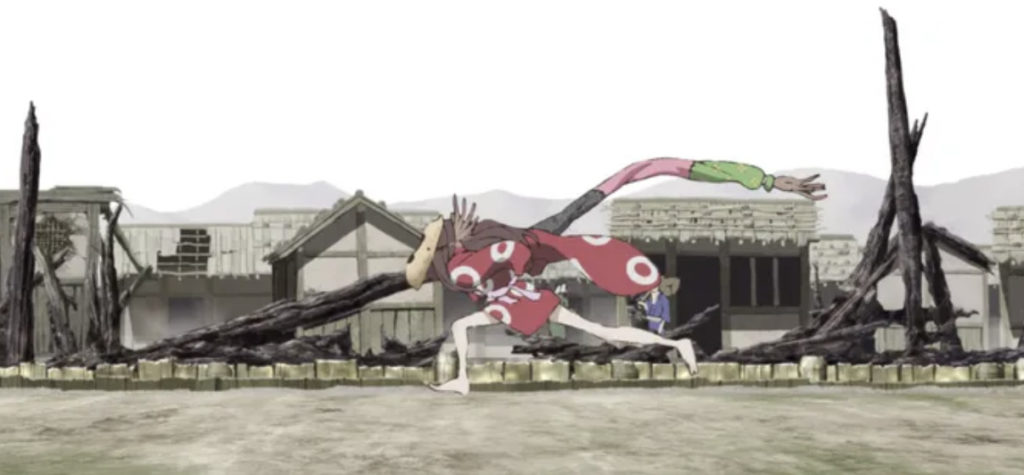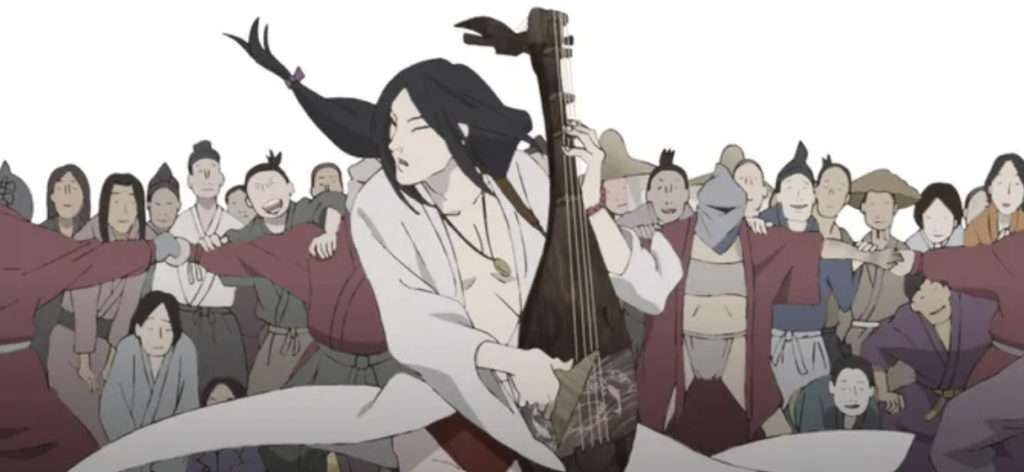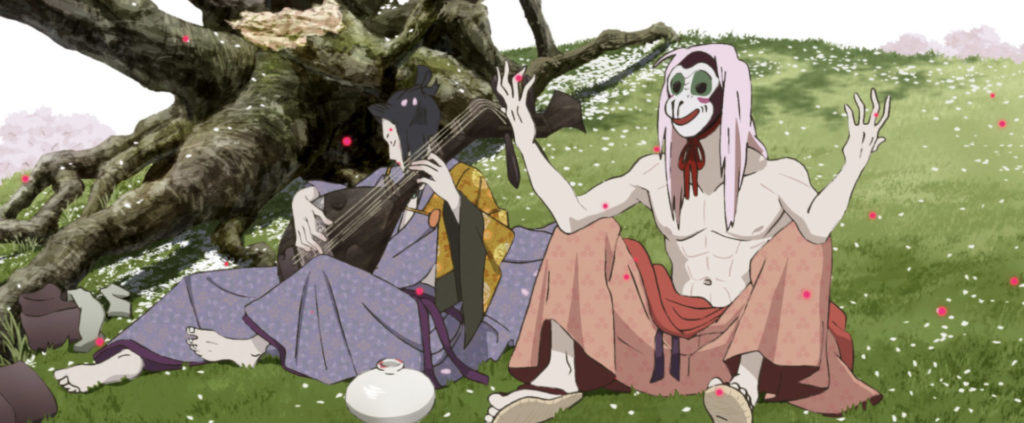
When it comes to history, historians explain what they know, but there are hundreds of thousands of people other than what is written about in the history books. Director Masaaki Yuasa understands such an idea and it inspires as fantastic a film as “Inu-oh.” Masaaki Yuasa’s “Inu-oh” brings to life an anime based on “The Tale of the Heike: Inuoh no Maki,” Hideo Furukawa’s 2017 book which tells the story of Noh actor Inu-oh who was active in the Northern and Southern Courts during the Muromachi period [approx. 1336-1573].
The novel is a new interpretation of “The Tale of the Heike,” a war chronicle completed during Japan’s Kamakura period which depicted the rise and decline of the Heike and that made room for the ascent of the samurai class.
The book was handed down by the real biwa masters who were 14th-century Japanese performers at the time of its transition from the folk art of Sarugaku into the formalized traditions of Noh and kyôgen.

The story takes place in this period, 200 years after the “Battle of Dan-no-Ura,” the legendary conflict between the Heike and Genji clans. Heike’s lost spirits are still hunting for those who disrespected them. Two young men, blind biwa player Tomona and deformed Noh performer Inu-oh, come up with completely new and original performances and rise to the top.
But Inu-oh has been cursed from a young age; his physically deformed body has one arm that stretches to several feet and two mismatched eyes which are scary to look at. He has to perform hidden behind a mask with the only thing that can heal his tortured body is a series of soul-baring performances. Tomona(He changes his name to Tomoichi after he joined biwa troupe) and Inu-oh take Japan by storm, making audiences move to the beat of their music.
Such a fast-rising reputation inevitably creates tension with a couple of authority figures —a leader (Inu-oh’s biological father) of the Sarugaku troupe, Heiza and Yoshimitsu Ashikaga, the third shogun of the Muromachi Shogunate. With the unification of the Northern and Southern Courts approaching, he comes up with the idea that heikyoku of different books should be prohibited.

Most of the music in “Inu-oh” is sung by Abu-chan, the lead singer of Queen Bee, the self-described “fashion punk” rockers. Not only does Abu-chan sing all the songs of Inu-oh but she also wrote the lyrics as well. Director Yuasa captures the cultural history with a vibrant style, such that you feel a musical high throughout the film. The magic of Japanese drama writer Akiko Nogi highlights the power of storytelling and how it can inspire and heal a tormented soul.
“Inu-oh” draws attention to an unsung hero from those days and connects us like a pop star of our time by using a rock opera approach — he’s haunted by spirits and curses —which leads him to self-discovery and a physical transformation. In the end, the film encapsulates the importance of listening to the past and employing cultural tradition. When it is shared with others what is as beautiful as the book, “The Tale of the Heike,” was when it was handed down by the biwa master centuries ago it remains so to this day.
Grade A-

Check out more of Nobuhiro’s articles.
Here’s the trailer of the film.

